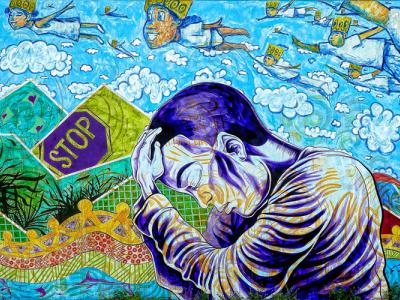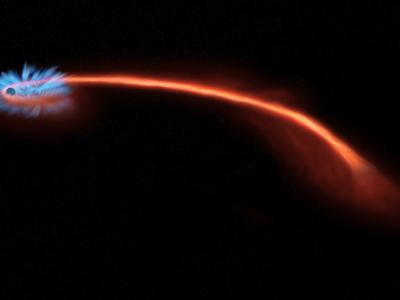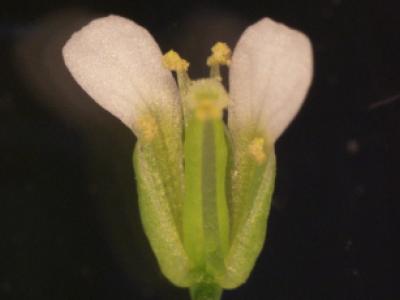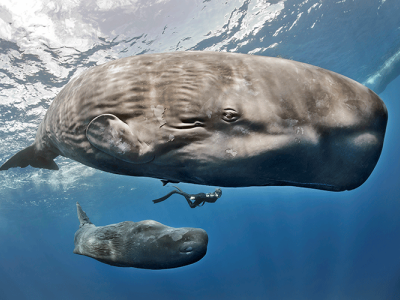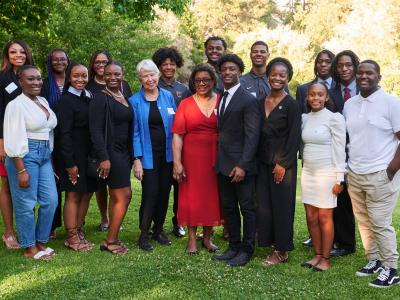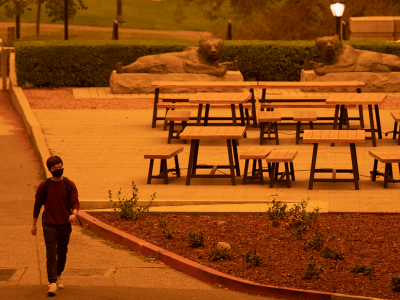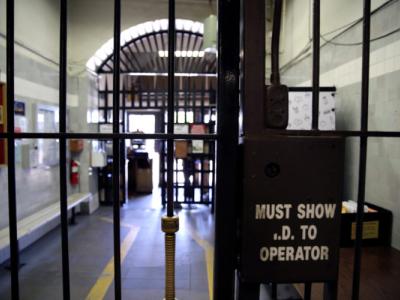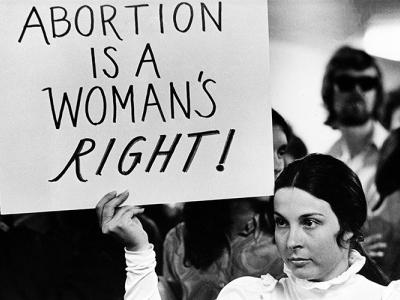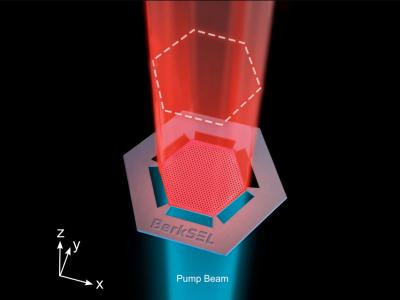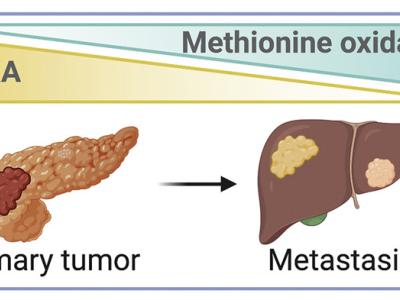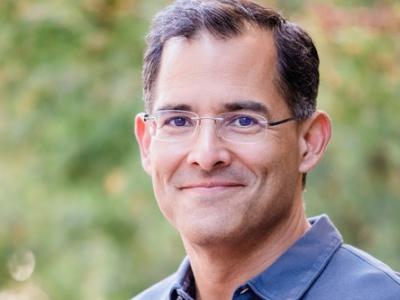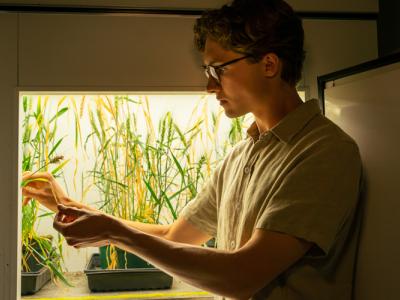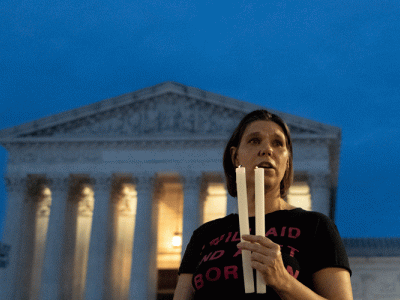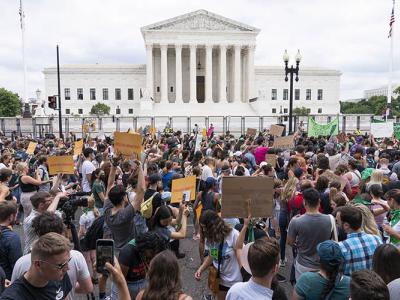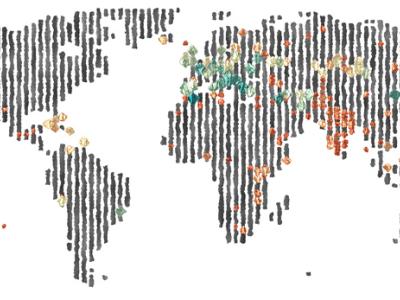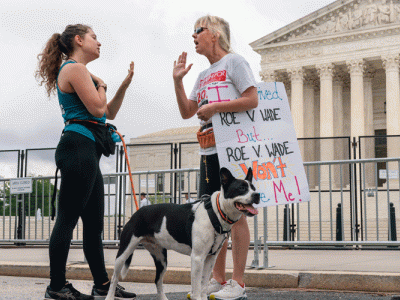“If having a gun really made you safer, then America would be one of the safest countries in the world. It’s not,” said Gary Younge, a professor of sociology at Manchester University and former editor-at-large at the Guardian, in a lecture at UC Berkeley on March 4, 2020.
Research News
Learn more about UC Berkeley's researchers and innovators.
Showing 689 - 704 of 3455 Results
In 2019, astronomers observed the nearest example to date of a star that was shredded, or “spaghettified,” after approaching too close to a massive black hole. That tidal disruption of a sun-like star by a black hole 1 million times more massive than itself took place 215 million light years from Earth. Luckily, this was the first such event bright enough that astronomers from the University of California, Berkeley, could study the optical light from the stellar death, specifically the light’s polarization, to learn more about what happened after the star was torn apart.
Researchers in the Department of Plant and Microbial Biology (PMB) have uncovered the intricate molecular processes that precede reproduction in flowering plants. Published July 6 in Nature, the findings document a previously unknown molecular process that serves as a method of communication during fertilization. According to Professor Sheng Luan, chair of the PMB department and the paper’s senior author, the exact mechanism for signaling has previously eluded researchers.
At the University of California, Berkeley, a real and more down-to-earth mission to decode an unknown form of communication is underway. Linguist Gasper Begus and computer scientist Shafi Goldwasser are part of an international team of researchers attempting interspecies communication with sperm whales by deciphering their deafening, 200-plus decibel clicking sounds, or codas.
Tuskegee University and UC Berkeley recently announced the Berkeley-Tuskegee Data Science Initiative, a multi-year partnership to develop curriculum and collaborative research opportunities for students and faculty at both institutions.
As wildfires become more frequent and severe due to climate change, it’s increasingly important to determine how and when the resultant smoke will move toward communities. To assist with predictions, the National Oceanic and Atmospheric Administration (NOAA) turned to Tina Katopodes Chow, UC Berkeley professor of civil and environmental engineering, and her students.
Overcrowding, sometimes in antiquated buildings, compounded by rapidly changing conditions and the need for complex coordination, helped to drive a dramatic surge in COVID-19 in California’s prisons, according to a new report from the University of California, San Francisco, and the University of California, Berkeley.
In this Berkeley Voices episode, Luker talks about why doctors began writing anti-abortion laws in the 19th century, the experiences women had ending unwanted pregnancies in the decades before Roe v. Wade and how she doesn’t see us returning to the normative sexuality and reproduction of the 1950s.
Berkeley engineers have created a new type of semiconductor laser that accomplishes an elusive goal in the field of optics: the ability to emit a single mode of light while maintaining the ability to scale up in size and power. It is an achievement that means size does not have to come at the expense of coherence, enabling lasers to be more powerful and to cover longer distances for many applications.
Pancreatic cancer, though rare, is one of the deadliest of cancers, killing nearly 50,000 people yearly and doing so quickly, primarily because it metastasizes rapidly through the body. Barely one in 10 people survive beyond five years. But a discovery by chemists at the University of California, Berkeley, suggests a new way to slow or stop metastatic spread of pancreatic and perhaps other cancers.
David Schaffer, PhD, a University of California, Berkeley professor of chemical and biomolecular engineering, bioengineering, and molecular and cell biology, has been appointed the next executive director of QB3, the institute announced today.
Coming from a long line of Iowa farmers, David Savage always thought he would do research to improve crops. That dream died in college, when it became clear that any genetic tweak to a crop would take at least a year to test; for some perennials and trees, it could take five to 10 years. Faced with such slow progress, he chose to study the proteins in photosynthetic bacteria instead. But the advent of CRISPR changed all that.
The landmark decision by the U.S. Supreme Court will almost immediately limit access to abortions in some states, but in the days and weeks to come, the shock waves will reach deeply into American life, UC Berkeley scholars say. Berkeley News asked a range of top campus scholars for their perspectives about the decision and its ramifications. Here’s what they told us.
The U.S. Supreme Court’s decision allowing many states to end or sharply curtail abortion rights will have profoundly harmful effects on those who are forced to continue unwanted pregnancies and on democracy itself, says UC Berkeley legal scholar Khiara M. Bridges.
Human populations have waxed and waned over the millennia, with some cultures exploding and migrating to new areas or new continents, others dropping to such low numbers that their genetic diversity plummeted. In some small populations, inbreeding causes once rare genetic diseases to become common, despite their deleterious effects. A new analysis of more than 4,000 ancient and contemporary human genomes shows how common such “founder events” were in our history.
The premise is simple, and it seems like common sense: If Republicans and Democrats could come together for good faith dialogue, the conversations would reduce tensions and ease the corrosive polarization that threatens U.S. democracy.
But a new study co-authored by UC Berkeley political scientist David Broockman found that brief, cross-partisan conversations about sensitive political topics have scant power to narrow divisions. Conversation about neutral topics can create some goodwill, the authors found, but even there, the effect doesn’t last.

